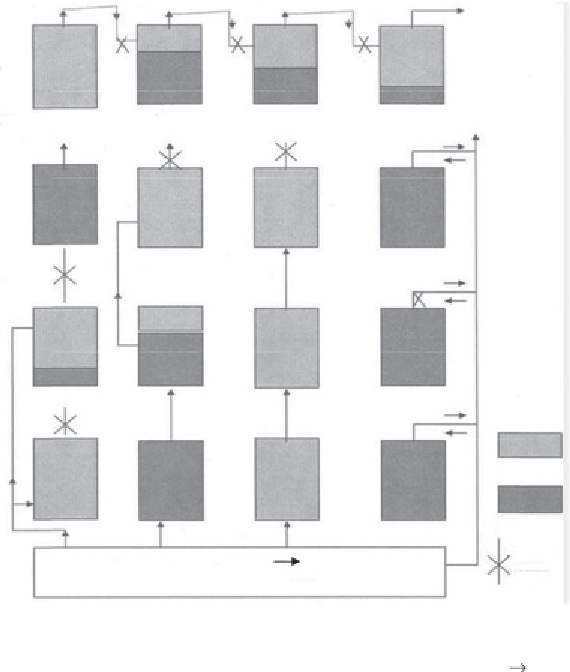Geology Reference
In-Depth Information
P
P2
P1
P3
(
a
)
J1
J2
J3
steam-gas mixture
Gas
(
b
)
(
c
)
(
d
)
(
e
)
Oil
P1
Isolated
accumu-
lation
Source steam-gas mixture
Figure 6.2
Thermodynamic models of stacked hydrocarbon accumulations' formation
by transport of vapor-gas hydrocarbon mixture through a battery of high-pressure
bottles. (a) Changes in ratios of hydrocarbon steam-gas and liquid phases
(j
1
j
2
) in
communicating vessels as pressure declines
(p
p
3
); (b) system of natural reservoirs with
various degree of vertical communicability and isolation between themselves; (c) system
of natural reservoirs under environment of normal evaporation and condensations;
(d) system of vertically communicating reservoirs covered with a thick impermeable
sequence; (e) system of vertically communicating reservoirs affected by simultaneous
paroxysmal manifestations of mud volcanism or tectonism.
contains a gas with vapors of a hydrocarbon liquid, for instance, octane;
and the pressure within each sequential bottle is below the previous one.
Then, as the gas with the dissolved octane vapor flows through the bottles,
the pressure declines according to the thermodynamic laws governing the
behavior of such hydrocarbon systems (retrograde condensation). The
molecular concentration of octane will be lower in each sequential bottle
compared to the previous one.


